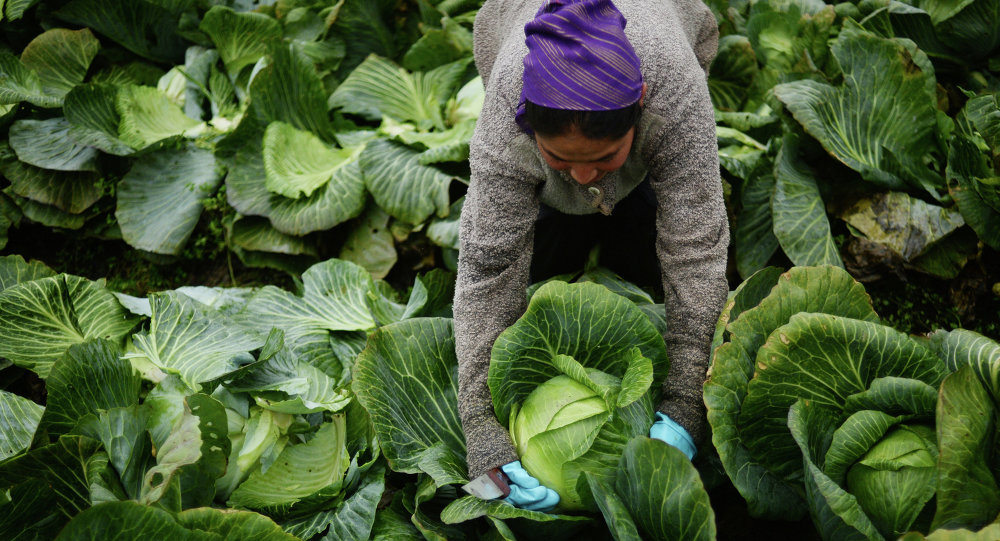
Cabbage is one of the gardeners' favorite crops. Climatic features of different regions of Russia allow you to get a rich cabbage crop. A summer resident needs to know not only what activities should be carried out for its full growth, but also how to choose the right time for harvesting heads of cabbage. Early cut heads can be unsuitable for storage and not juicy enough. Late harvesting is fraught with cracking heads.
Content
- 1 General rules for determining the timing of harvesting cabbage
- 2 When is it better to remove cabbage for pickling
- 3 The influence of weather on harvesting cabbage
- 4 Terms of harvesting cabbage depending on the ripening period
- 5 How to determine if cabbage is ripe
- 6 How to remove cabbage
- 7 Cleaning process
- 8 Storage options
- 9 Conclusion
General rules for determining the timing of harvesting cabbage
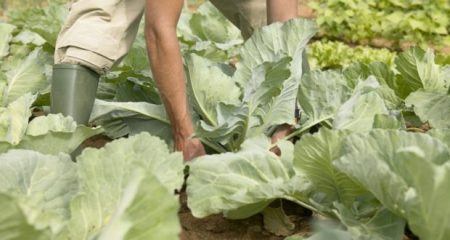
Analyze a number of factors to determine cabbage harvest dates:
- ripeness of the variety;
- climatic features of the region;
- weather;
- vegetable condition;
- the size;
- head density.
For each purpose, the timing of harvesting cabbage is different. For cooking and salting, the harvesting period is typical for the beginning - mid-autumn.
| View | Cleaning time |
| White-headed | July - 2nd half of October |
| Broccoli | 2nd half of August - 1st half of September |
| Brussels | 2nd half of September - 1st half of October |
| Red-headed | 2nd half of August - mid-September |
| Kohlrabi | 2nd half of September - 1st half of October |
| Sheet | As the ripening, to frost |
| Beijing | Until mid-October |
| Savoy | Until mid-October |
| Color | Mid July - Mid September |
When to remove cabbage from the garden according to the lunar calendar
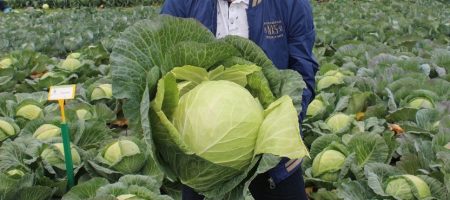
It has long been proven that all biological and physical processes are associated with the influence of the satellite of our planet - the Moon. In the period of the coming month, growth, flowering and fruiting of all cultures are intensely taking place. During the waning of the moon, all processes slow down. In this regard, it is advisable to plan the harvest of cabbage during the reduction of the month. The vegetable before the full moon will pick up juiciness and be ready for cutting.
You should study the lunar calendar a month before harvesting events. As soon as the full moon passes, you need to choose a dry sunny day and cut the heads of cabbage. A culture harvested on a waning moon will be characterized by higher juiciness and the presence of nutrients, vitamins.
It's time to harvest cabbage in the Moscow region and the Leningrad region
In the Moscow and Leningrad Region, summers can be both hot and dry, and cool and rainy. The cabbage harvesting time for such regions depends on the speed of ripening of heads of cabbage and weather conditions.
Early ripe varieties are cut in the second half of July with transplanting in mid-April. Late ripe forks are to be harvested in late September - early October.
When harvesting cabbage in the middle lane
In areas of the Middle Strip, heat comes early. Already in late March - early April, you can sow cabbage seeds for seedlings. Landing in open ground is carried out in early May. The first heads of early varieties are cut at the end of June.
Late-ripening varieties are ready for harvest in late August and early September. The middle strip is characteristic of hot summers and often dry weather, so cabbage in this region is not always rich in productivity. In the cool summer, much more cabbage is harvested.For starter vegetables are harvested in late October - early November. For this, her landing is done in late May - early June.
Harvesting cabbage in the Urals and Siberia
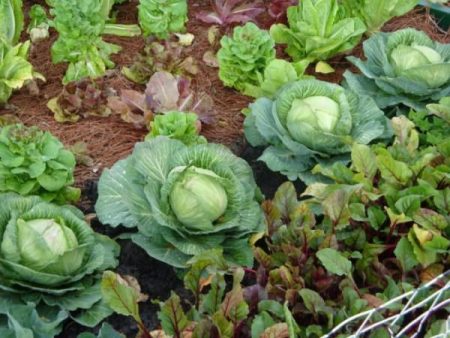
The climatic conditions of the Urals and Siberia allow cabbage to be planted in May, but in greenhouses or indoors. Summer residents begin to sow seeds in late April or early May. Sustainable heat in these regions begins in mid-May, and early ripening varieties can be cut already at the end of July.
Late-ripening varieties are also planted in early May, and harvested in late September-early October.
Timing of harvesting cabbage in Belarus
The Belarusian summer is characterized by a high temperature regime and a short duration. Varieties of medium ripeness are optimal for the region, which are harvested in mid-October with the onset of frost. Early ripe varieties are harvested in mid-July.
When is it better to remove cabbage for pickling
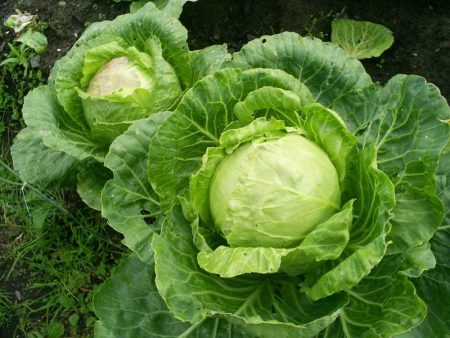
For sourdough, you can select different dates. You can pickle an early ripe variety and store it in special conditions. But the resulting canned product will not fully possess that spectrum of vitamins, antioxidants and nutrients, and will also have different taste qualities.
The best for pickling recognized late ripe varieties of cabbage. For their maturation, at least 150 days from the moment of sowing the seeds will be required. During this period, the culture gains the maximum possible amount of nutrients, is poured with juice, sugar appears in its composition, bitterness disappears. Late ripe vegetable is crispy and juicy. It is better fermented and superbly stored.
The influence of weather on harvesting cabbage
In Russia, cabbage is planted almost everywhere. Only the regions of the Far North are unsuitable for growing garden crops. Depending on the area, gardeners harvest cabbage. In the south, early ripe varieties are already ready for cutting at the end of July, while in the middle lane the head of cabbage is only tied.
The optimal temperature regime for the full growth of cabbage is a range of 15-20 ° C.
The weather, which lasted all season, also affects the timing of harvesting cabbage. Cool rainy summers contribute to the rapid growth of culture. The abundance of moisture also contributes to the development of a powerful root system and the formation of juicy tight heads. Heat, even with regular watering, negatively affects productivity.
Terms of harvesting cabbage depending on the ripening period
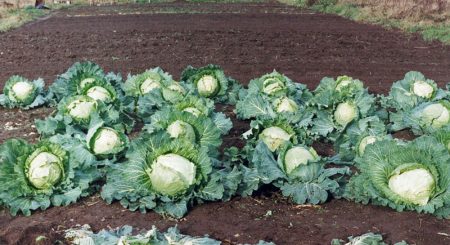
The timing of cabbage harvest varies depending on the precocity of the variety. To be able to start cooking dishes of fresh cabbage as early as possible, you can choose early ripe varieties. Late ripening is better for salting.
Agronomists developed dozens of varieties. According to the ripening period, the groups are distinguished:
- super early. Specially bred varieties that are ready for use sooner than three months later. Do not delay the harvest of ripe heads of cabbage. They are cracking. Cracks are dangerous if they get germs, sheets dry out or the head rots;
- early ones. Harvest is ready for use after 100 days after seed emergence;
- mid-season. Harvesting dates of mid-ripening varieties vary from 120 to 130 days after planting seeds. Cabbage of medium maturity is suitable for long-term storage;
- late ripening. Cabbage can be cut off after 150 days. It has an optimal maturity and quality of heads of cabbage for pickling and pickling. Early cutting of late-ripening varieties is undesirable, as this affects the shelf life of the crop fresh.
In order to guess the time of harvesting the cabbage, add the number of days corresponding to a particular variety to the seed planting date.
How to determine if cabbage is ripe
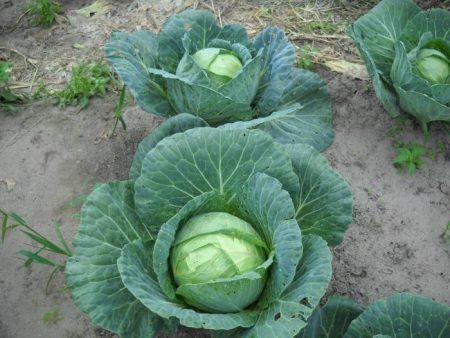
To determine if cabbage is ripe, several factors need to be evaluated:
- visual inspection of the head of cabbage. The yellow crown and yellow extreme leaves indicate that the cabbage is ripe;
- feel forks. A firm head and a hard core signals ripeness;
- rate the size. Forks of medium size and more means that the vegetable can be cut;
- observe the culture. A noticeable growth process suggests that you still have to wait with the harvest. If the head of cabbage no longer grows, the forks can be removed.
Prevent freezing of cabbage. It is better to remove the culture immediately after stable night frosts. Forks lose their useful and palatability. Heads slightly touched by frost are suitable for long-term storage.
How to remove cabbage
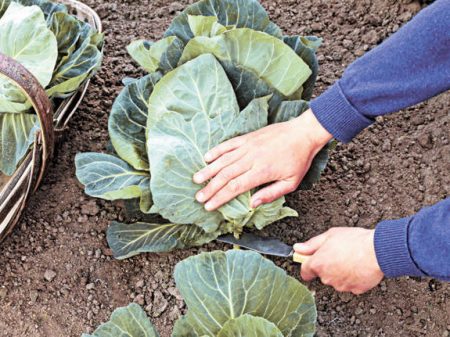
Before determining when to harvest cabbage, you should familiarize yourself with the forecast of weather forecasters and observe the weather. As a rule, in most regions, the time of the first frosts and snowfall almost always occurs at the same time with a slight deviation.
Cabbage tolerates night coolness and a temperature drop of up to + 5 ° C. Even a few frosts do not harm the culture, but only improve its taste. Natural chemical reactions that occur in the head of cabbage increase the amount of sugar and reduce the concentration of substances that cause bitterness.
Even in late September and early October, in different regions with possible night frosts, cabbage continues to grow, gaining juice. If night temperatures for more than three days are kept below 6 ° C without daytime heat, it is necessary to analyze the state of the vegetable. Frosted leaves do not thaw during the day? It's time to harvest.
You should pay attention to the size of the vegetable. Huge heads of cabbage that are not cut in time can crack and rot.
Experienced summer residents with excessive growth of the head of cabbage limit its nutrition. To do this, they partially pull the forks out of the ground. Cabbage receives nutrients in part, but this is enough for the head to gain ripeness.
Prior to heading out, it is necessary to carry out all the necessary procedures for caring for the crop - loosening, watering, and top dressing. Night frosts with a change to positive daily temperatures are not a hindrance to the growth of cabbage.
Cleaning process
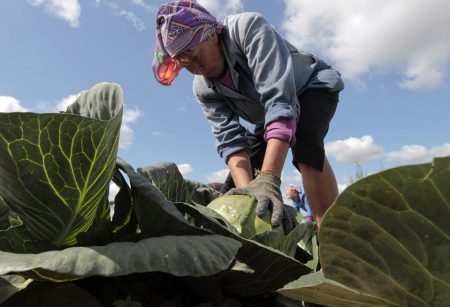
It is more expedient to carry out measures to cut head of cabbage on a dry sunny day. For the procedure, you should prepare a garden tool, overalls, board shields or boards, a storage room.
Cabbage is harvested as follows:
- forks are pulled out of the ground or dug with a bayonet shovel;
- the root system is shaken off the ground;
- cabbages are laid on boards located on the street. This is necessary to remove excess soil from the rhizomes. A crop should not be left in the open sun for a long time;
- harvested crops are transferred to a cellar or other storage place;
- remove the outer leaves. This measure is necessary due to the fact that pests can be hidden under them;
- trimming the stoker if necessary. Depends on the storage method.
If cabbage harvesting has become urgent due to snowfall, heads for drying should be placed under a canopy. Small forks do not leave for storage. They are only suitable for short cooking or salting.
Storage options
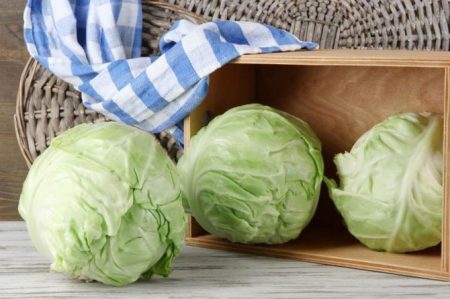
Often used for storage various rooms - cellars, cellars, verandas, sheds. Cabbage can be stored:
- in limbo. For this, cabbages are suspended by a poker;
- on shelves or racks. Heads raised above the floor level are better stored, as there are more favorable conditions for the circulation of moisture and air. Before laying cabbage on a shelf, the kocherigu is cut with a sharp knife;
- wrapped in cling film. The upper leaves are removed, the forks dry well for several days in a cool, dry place, they remove the poker and wrap it in film. It is important that moisture does not get under the packaging and that it maintains integrity;
- in cellars and cellars. Before carrying cabbage to the planned place, it should be prepared. You need to clean, do the processing and thoroughly dry the room. The temperature of the basement or cellar should have been low enough for the safety of the heads of cabbage.
Cabbage is stored well and for a long time in cool rooms at temperature conditions from -1 ° C to + 2 ° C.
Conclusion
It is necessary to correctly calculate the time of harvesting cabbage. Earlier cut heads of cabbage cannot be fully preserved and get the maximum of nutrients and vitamins from the crop. Late harvested cabbage also loses its properties for fresh preservation.
It is necessary to build on the variety and maturity of cabbage. Depending on the region, harvesting times vary - for early ripening varieties from late July to late July, for late ripening varieties from late August to early October.

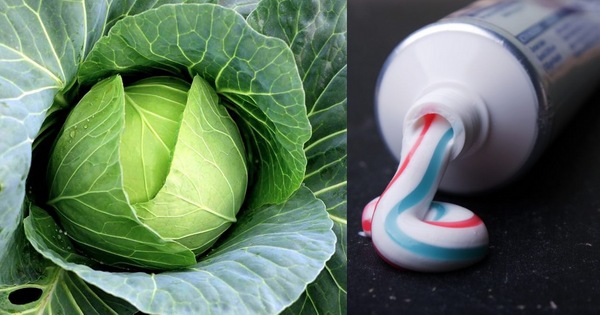
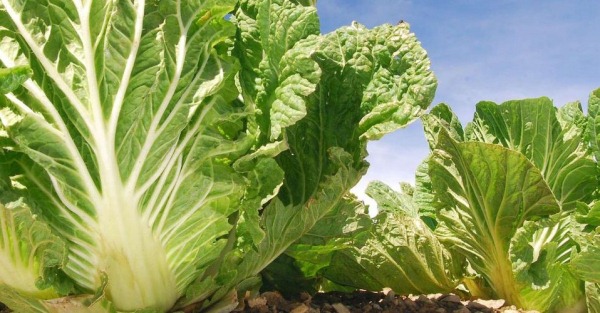
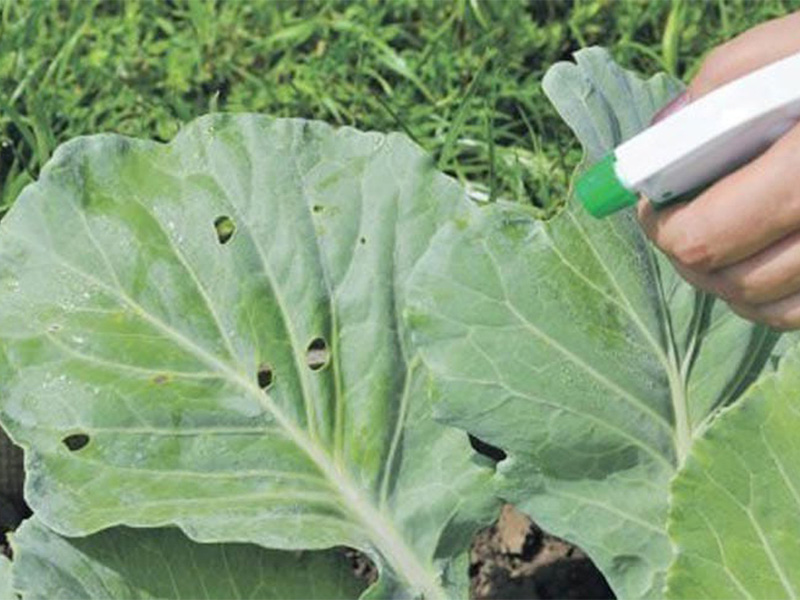
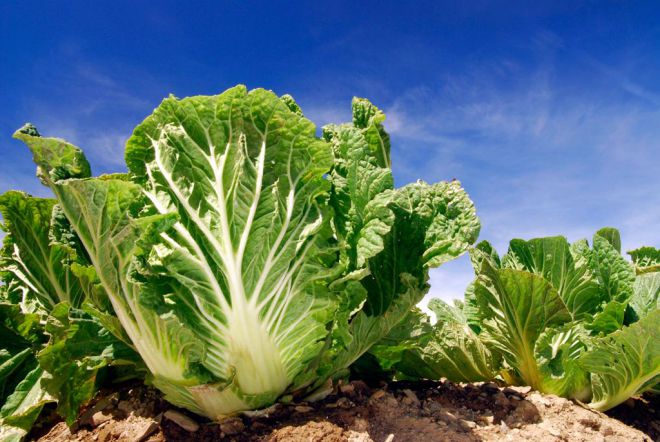 How to grow Chinese cabbage on your site?
How to grow Chinese cabbage on your site?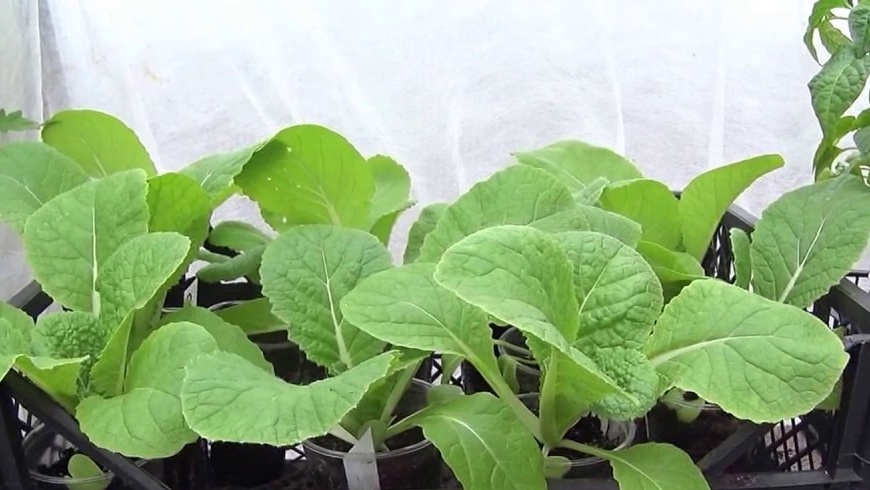 When to plant Chinese cabbage on seedlings in 2024
When to plant Chinese cabbage on seedlings in 2024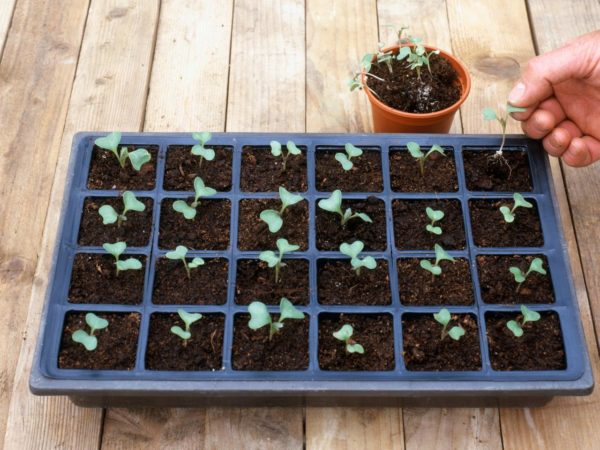 When to sow cabbage for seedlings in 2019 on the moon
When to sow cabbage for seedlings in 2019 on the moon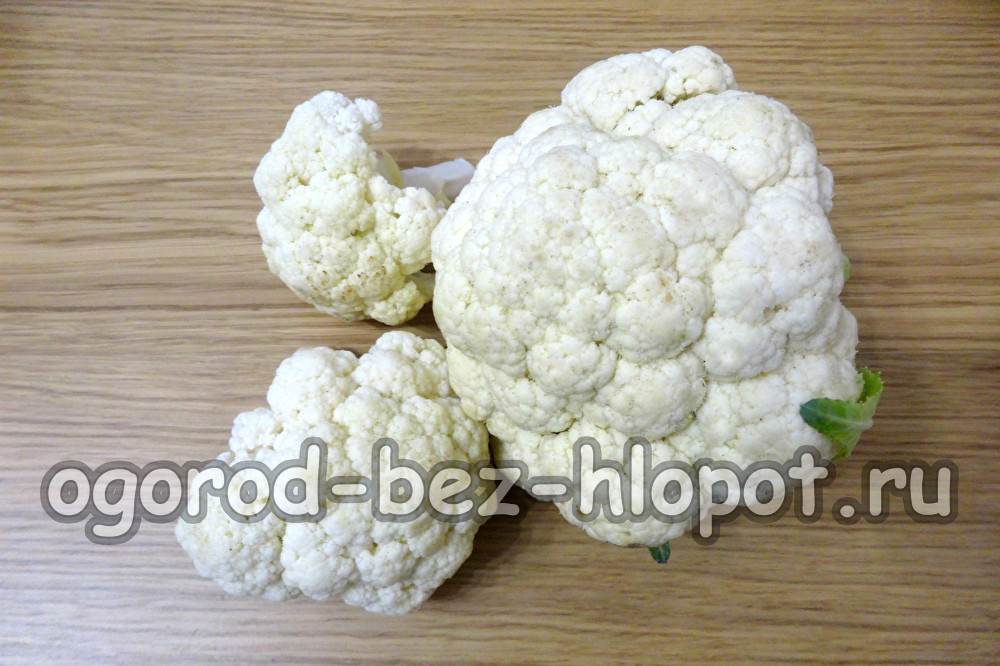 Cauliflower: how to grow large snow-white inflorescences
Cauliflower: how to grow large snow-white inflorescences